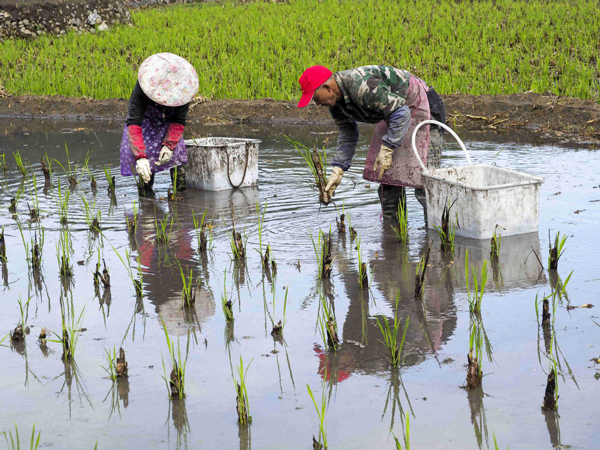Zhejiang sets example in poverty alleviation

Villagers plant wild rice in Jingning county, Zhejiang province, in March. LI SUREN/FOR CHINA DAILY
Zhejiang authorities unveiled a report on the province's poverty alleviation campaign in a conference held in Jingning county, Lishui on Oct 12.
The conference was part of Zhejiang's weeklong series of events marking the seventh National Poverty Relief Day on Oct 17.
The province's poor population dropped from 12 million in 1978 to 600,000 in 1999. In 2002, Zhejiang became China's first-ever province to have no impoverished townships. By the end of this year, local authorities plan to ensure that every household in the province has an annual per capita income above 8,000 yuan ($1,187).
Also of note, Zhejiang's urban-rural income disparity is the smallest among all Chinese provinces. The per capita income of its rural residents has been the highest among all Chinese provinces for the past 35 years.
In 2002, Zhejiang launched a poverty alleviation program which assigned prosperous counties in its coastal region to support the economic development of the 361 townships in its mountainous region which lag behind the national average in terms of per capita income of rural residents. By 2007, 80 percent of the 361 townships had surpassed the national average income level. Poverty at the regional level has been eliminated in Zhejiang since then.
In recent years, Zhejiang has been striving to improve the livelihood of each and every individual, following its own poverty relief standards which are much more stringent than the national standards.
In 2012, the province's relief standard for rural low-income households was 4,600 yuan, twice the amount of the national standard, and that number has been rising year after year.
Low-income rural households are spotted immediately through a banking system and offered dedicated social relief, financial services, vocational training, and more.



 Print
Print Mail
Mail
